You have an ever-growing family, and you have guests over regularly, and every time, your reverse osmosis system runs out of filtered water. You want your guests to enjoy the best water that you can offer, you wish you had more quality water for them.
How Can I Get More Water From My Reverse Osmosis System? To get more water from your reverse osmosis system, make sure the pressure in the storage tank is correct, check for clogged filters or membrane, a ruptured bladder, install a larger storage tank, or add an additional storage tank.
If your reverse osmosis drinking water system doesn’t seem to be delivering the same amount of water that is used to, here are a few simple things to check to get your system producing the most water that it can.
Make sure the pressure in your storage tank is correct
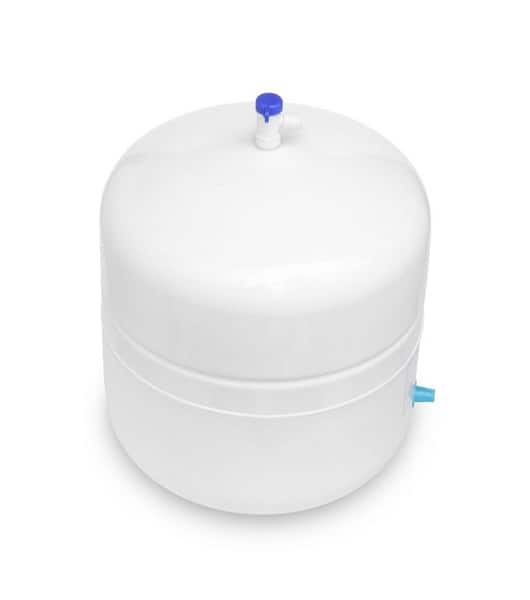
Inside of your reverse osmosis systems’ water storage tank is a rubber bladder that is basically a rubber bag that holds the water until you need it.
This bladder is surrounded by pressurized air in the tank which squeezes the bladder to push the water out.
If your reverse osmosis water storage tank has lost pressure over time (just like a bicycle or car tire can), it will no longer have the pressure to push out all of the water that it should.
Adding air to the tank will compress the bladder all the way, so it will be able to dispense all of the water from the bladder.
But putting too much air in the tank is not good either!
If the bladder in the storage tank has too much pressure surrounding it, it will not allow enough water to go into the bladder.
Essentially, the air pressure will push on the outside of the bladder, keeping it closed, so no water can go in.
This is why it is very important to get the correct amount of pressure in your storage tank.
Pressure too low in the tank equals water stays in the bladder. Pressure too high in the tank equals water can’t get into the bladder.
See my article on How To Re-pressurize Your RO Storage Tank for details on getting your pressure tank to the ideal pressure so you will get the optimal water from it.
Check that the water supply valve is on all the way
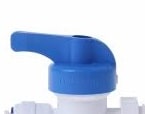
If your reverse osmosis system is installed underneath your kitchen sink as most are, there are likely people taking items out, and putting items back in under your sink all the time.
In doing this, sometimes the water valve going to your reverse osmosis system can get moved.
Just a light tap from a bottle of cleaner can partially or totally shut the water to your reverse osmosis system off.
If it gets shut off completely, you will notice it very soon, but if it just gets turned off halfway, it could be a while before you notice a difference.
You may have a clogged filter
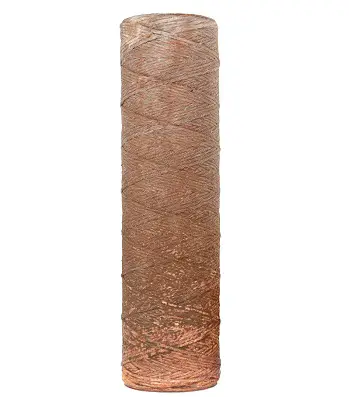
Anytime that the water feeding into your reverse osmosis system is blocked or slowed, the production of filtered water can slow down, it may produce less water than it is supposed to, and even the quality of the water can be reduced.
One of the most common causes of poor pressure in a reverse osmosis drinking water system is a clogged pre-filter.
A pre-filter can easily get clogged when regular sediment is drawn up from a well, or when a large amount of sediment comes in with your source of water due to heavy rains, or a lack of rain.
Your membrane might be clogged
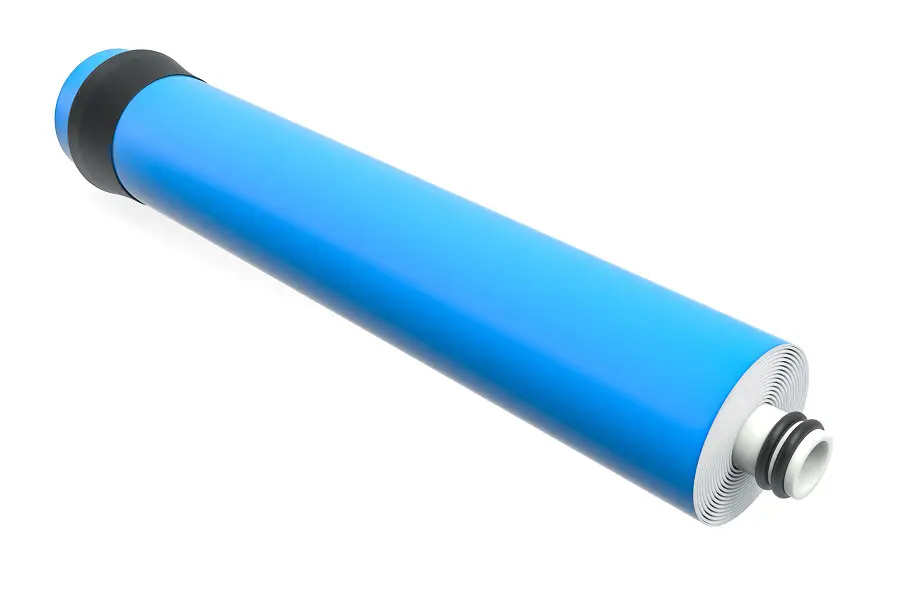
Any debris that works its way past your reverse osmosis systems pre-filter will end up being caught by your systems membrane.
Hardness in your water which is made up of hard minerals in your water will not get filtered out by a pre-filter and will end up clogging your systems membrane.
As your membrane clogs, less and less water will get through it, and the drop in pressure forcing the water through the membrane will lessen the membranes’ ability to filter the water, which means that the quality of the water will diminish.
When a reverse osmosis system stops producing filtered water, the semi-permeable membrane allows some filtered water to travel backward through the membrane which helps to clear the membrane, but clogging may still occur over time.
The bladder in the tank may have ruptured
When the bladder inside of a reverse osmosis storage tank develops a hole or tear, water feeding into the bladder will leak out into the tanks shell.
When this happens, there will not be any room for air in the storage tank.
Without pressurized air surrounding the bladder, any water in the bladder can’t be forced out and to the systems’ water faucet.
When a storage tank bladder ruptures, the symptoms are, very little to no water coming from the faucet, and the storage tank is much heavier than normal due to having nearly twice as much water in it as usual.
Add a second tank
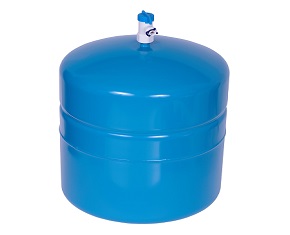
Adding a second storage tank to a reverse osmosis system is quite easy. Simply add a “T” connection to the 1/4 inch or 3/8 inch tubing going to and from your original storage tank and connect the second tube to the new tank.
When adding a second storage tank, I highly recommend purging all of the water from both tanks about once per month to maintain freshwater in both tanks.
Adding a second water storage tank to your reverse osmosis system is very easy. You can choose from one of my recommended storage tanks.
Upgrade to a larger storage tank
If you want more water from your reverse osmosis drinking water system, the best way to do it is to replace your standard-sized storage tank with a high volume storage tank like one of my highly recommended reverse osmosis storage tanks.
Replacing a storage tank is very quick and simple.
Just shut off the water feeding your reverse osmosis system, turn on the faucet until the water stops completely, then remove the tubing going to your existing tank and connect it to the new one.
Turn the water back on, and shut off the faucet. Let the tank fill for about 4 hours, and then use it as normal.
Having all of the components of your reverse osmosis system working as well as they can, will ensure that it performs as best as it can.
Change your reverse osmosis filters, and check over your system regularly, and it will provide you with all the water that it can.
If your not sure how often to change your filters, check out my article, How Often Should You Change Your Reverse Osmosis Filters.


Hi Paul,
I really enjoy your web site it’s very helpful and informative. Our problem is with the RO system, it does a hammering more like a thudding sound, The only way to stop it is to turn off the water supply valve between main water line under the sink to the feed filter on the RO, some time’s it will stop the thudding on its own, I think when the tank gets full of water. We can also hear it in our bed and bathroom, and in the garage where my water softener is located. we also have an instant hot water pump on the water heater, so we do get a lot of warm water thru the RO system, we have to put ice in the water to cool it down.
Could the RO Filters cause the noise, they are two + years old. we’re to the point where we just leave the valve to the RO feed off. Any solution would be appreciated. Thanks, Ron
Hello Ronald, and thank you for the question.
My first concern is that you have hot water going through your reverse osmosis system, hot water can ruin water filters. See my article on “Does Hot Water Ruin Water Filters?“.
Also, you should never let your reverse osmosis filters go 2+ years without changing them. See my article “How Often Should You Change RO Filters”
Usually, a knocking or hammering noise from a reverse osmosis system is due to fluctuation in water pressure. This may very well be because the filters have become clogged, or the filters are no longer filtering out debris that has now gotten into the reverse osmosis membrane.
I would recommend testing the quality of the reverse osmosis water with a Total Dissolved Solids meter to determined if the water is being filtered properly. And then change the filters A.S.A.P.
If the water coming from your reverse osmosis has a Total Dissolved Solids reading that is more than 15% of the reading from your tap water, I would also recommend changing the reverse osmosis membrane.
There is a good chance that the filters are restricting the water flow through the system, causing it to pulsate, which results in a hammering noise.
Hope this was helpful.
Paul